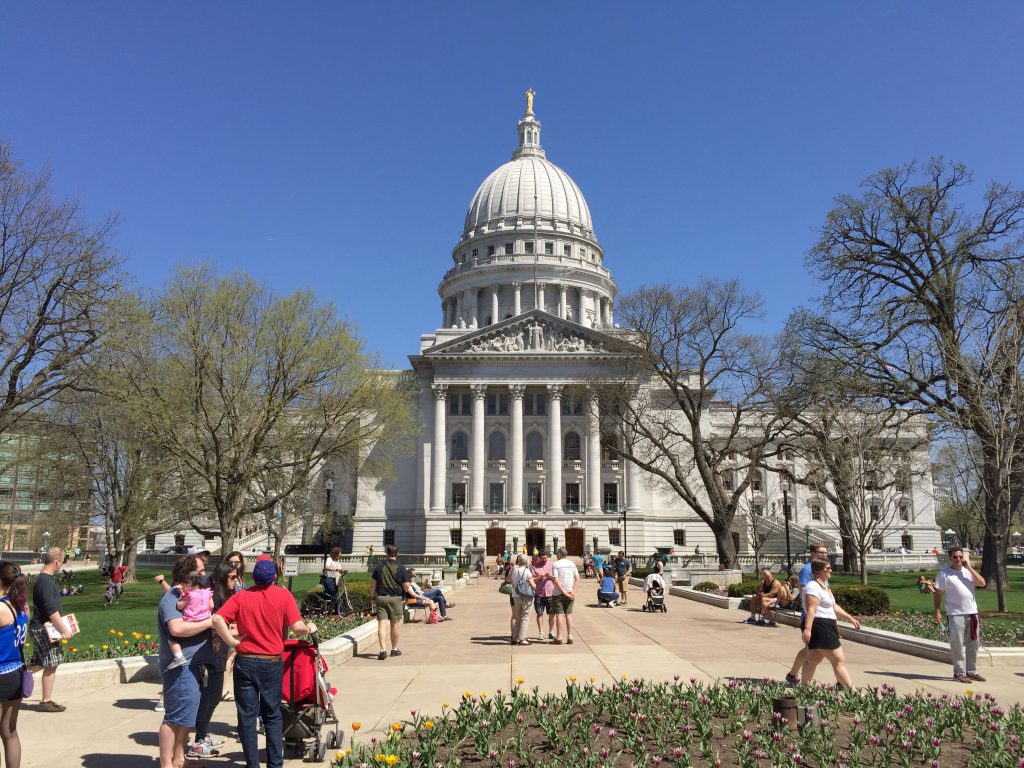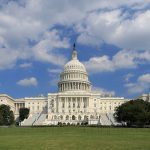A Tale of Two Cities
Radically different budget bills passed in Madison and Washington.
It was a tale of two governments.
And two very different budgets.
In Madison, leaders of Wisconsin’s state government negotiated a bipartisan state budget that met a July 1 deadline. In Washington, Republicans in Congress agreed to President Donald Trump‘s my-way-or-the-highway demands and passed changes that soon will no longer tax tips or overtime pay, but delays cuts in Medicaid and food stamps until after the 2026 elections.
There were so many differences in the bottom-line actions of each government.
Partisanship: Wisconsin’s two-year spending plan was relatively bipartisan: It was supported by 67 of the Legislature’s 73 Republicans and 11 of the 59 Democrats. It was the first budget in 14 years to get widespread Democratic support. The compromise budget was also endorsed and negotiated by Democratic Gov. Tony Evers.
But only one Milwaukee Democrat – Rep. Sylvia Ortiz-Veliz – and only two Dane County Democrats – Sen. Dianne Hesselbein and Rep. Maureen McCarville – voted for it. Other Democrats who voted for it represent districts in and around La Crosse, Eau Claire, Appleton and Green Bay.
In Washington, Congress passed the President’s fiscal package with the votes of 268 Republicans – 50 in the Senate and 218 in the House – and none of the 257 Democrats.
Democrats vowed to make the federal bill’s 2027 cuts in Medicaid a major election-year issue. A report by the health care organization KFF says three Republican House members from Wisconsin represent districts with more than 20% of residents relying on Medicaid: First District Rep. Bryan Steil, 23%; Seventh District Rep. Tom Tiffany, 22%, and Third District Rep. Derrick Van Orden, 20%.
Tax policy: Wisconsin’s 2025-2027 budget expands a popular income tax bracket for single filers and couples with taxable incomes of less than $67,000, resulting in an average decrease of $180 a year. The Legislative Fiscal Bureau projects that 80% of that tax cut will go to taxpayers with taxable incomes of less than $80,000 a year.
The state budget also ends income taxes on pensions and other retirement incomes of up to $24,000 a year for single filers and $48,000 for couples, if you’re a full time resident over age 65.
The state budget’s income tax cuts will total $1.3 billion by mid-2027.
By contrast, the “big, beautiful bill” President Trump signed into law heavily favored the wealthy. It will continue tax cuts enacted during his first term that would have expired at the end of the year. It will also end income taxes on tips and overtime, subject to income limits.
As a result, CNN reported, net income for the top 20% of earners would increase by nearly $13,000 per year, after taxes and transfers. For the top 0.1% of earners, the average annual income gain would be more than $290,000, CNN said, citing a report from the nonpartisan Penn Wharton institute.
Those in the lowest-income group, earning less than $18,000 a year, would see a $165 reduction in their after-tax, after-transfer income, once cuts in Medicaid and food stamps are considered, according to Penn Wharton.
“Middle-income households would see their income rise by $1,430, or 1.8%,” CNN added. “They earn between $53,000 and $96,000.”
Fiscal futures: The Legislative Fiscal Bureau projects that Wisconsin state government will have an available surplus of $770 million on the June 30, 2027, end of the new two-year budget. Spending in that budget drew down a surplus of $4.3 billion on June 30 of this year.
In Washington, the Committee for a Responsible Federal Budget estimated that the new federal tax-and-spend package will add $2.4 trillion to primary deficits over the coming decade, but a total of $3 billion when interest payments are included.
The federal deficit is now about $37.1 trillion, according to the national debt clock.
Trump Administration officials dispute that projection of higher deficits, however.
Political impacts: In Wisconsin, the new state budget gave legislators from both parties something to run on in 2026 elections.
Even so, Wisconsin Democrats will target the 11 Republican senators running in newly-mapped districts who are up for re-election next year. Three Democrats have already announced plans to run against Republican Sen. Howard Marklein, cochair of the Finance Committee, for example.
In Washington, the Trump Administration must defend the unpopular tax-and-spend plan — polls show only 31% of Americans support it — in the upcoming 2026 elections. A Poynter Institute report says the party that controls the White House has lost an average of 27 House seats in off-year elections since World War II. That would give Democrats control of the House.
Steven Walters started covering the Capitol in 1988. Contact him at stevenscotwalters@gmail.com
If you think stories like this are important, become a member of Urban Milwaukee and help support real, independent journalism. Plus you get some cool added benefits.
The State of Politics
-
A Wisconsin Political Trivia Quiz
 Dec 15th, 2025 by Steven Walters
Dec 15th, 2025 by Steven Walters
-
The Fight Over Wisconsin’s House Districts
 Dec 8th, 2025 by Steven Walters
Dec 8th, 2025 by Steven Walters
-
The Battle Over On-Line Betting
 Nov 24th, 2025 by Steven Walters
Nov 24th, 2025 by Steven Walters




















Typo in p 17: “…but a total of $3 billion when interest payments are included….” should be “…$3 trillion….” Also, the total will be more than. $3.3 trillion as reported by other outlets.
Similarly, p 18 is wrong: “The federal deficit is now about $37 billion, according to the national debt clock.” Presumably this refers to the national debt now (not “deficit”), but the amount is over $37 _tr_illion, not “billion” as represented here.
Editors?
11 of 59 Democrats qualifies as “widespread Democratic support”?